 With my feet failing fast, and the lederhosen beginning to chafe in a most disagreeable fashion, I viewed the end of AERO 2024 with mixed emotions. My legs said enough is enough, but my head, heart and eyes still wanted more—because what a show it was! From replica rocket-powered fighters to jet packs, LSAs fitted with turbines and paramotors for paraplegics and finally to biplane pusher SSDRs, it was a fabulous event.
The AERO team produced a show that they could justifiably be proud of for the 30th anniversary, and although the weather was unseasonably cool, the action in the halls was as hot as ever, and with more than 270 aircraft in the exhibition halls and in the static display, show-goers were not short of mouth-watering machines to tempt their wallets.
Among the aircraft debuting at the show were the electric DA40 aircraft from Diamond Aircraft in Austria, two electric aircraft and a hydrogen powered one from China and the Integral E from French manufacturer Aura Aero.
With my feet failing fast, and the lederhosen beginning to chafe in a most disagreeable fashion, I viewed the end of AERO 2024 with mixed emotions. My legs said enough is enough, but my head, heart and eyes still wanted more—because what a show it was! From replica rocket-powered fighters to jet packs, LSAs fitted with turbines and paramotors for paraplegics and finally to biplane pusher SSDRs, it was a fabulous event.
The AERO team produced a show that they could justifiably be proud of for the 30th anniversary, and although the weather was unseasonably cool, the action in the halls was as hot as ever, and with more than 270 aircraft in the exhibition halls and in the static display, show-goers were not short of mouth-watering machines to tempt their wallets.
Among the aircraft debuting at the show were the electric DA40 aircraft from Diamond Aircraft in Austria, two electric aircraft and a hydrogen powered one from China and the Integral E from French manufacturer Aura Aero.AERO Wrapup: Dave Unwin Concludes His Coverage of AERO Friedrichshafen 2024
With my feet failing fast, and the lederhosen beginning to chafe in a most disagreeable fashion, I viewed the end of AERO 2024 with mixed emotions. My legs said enough is enough, but my head, heart and eyes still wanted more—because what a show it was! From replica rocket-powered fighters to jet packs, LSAs fitted with turbines and paramotors for paraplegics and finally to biplane pusher SSDRs, it was a fabulous event.

Dave in a Dingo
The AERO team produced a show that they could justifiably be proud of for the 30th anniversary, and although the weather was unseasonably cool, the action in the halls was as hot as ever, and with more than 270 aircraft in the exhibition halls and in the static display, show-goers were not short of mouth-watering machines to tempt their wallets.
Among the aircraft debuting at the show were the electric DA40 aircraft from Diamond Aircraft in Austria, two electric aircraft and a hydrogen powered one from China and the Integral E from French manufacturer Aura Aero.
The two Chinese RX-1E-A machines from Rhyen Aircraft Industry Co. Ltd were particularly interesting, as they were fitted with batteries that could be quickly and easily removed and exchanged for freshly charged ones. Of course, there’s always a downside: Quickly replaceable batteries are a great idea, until they get dropped. That could be a very expensive mistake! Secondly they can’t be liquid-cooled and having flight-tested two electric aircraft I’m very aware just how important monitoring the temperature of the batteries is. Air-cooling lithium-ion batteries really doesn’t cut it in my experience. Or does the Rhyen Aircraft Industry Co. Ltd know something I don’t?
Even the seminars were interesting (if you could drag yourself away from all the wonderful aircraft on show) and LAMA’s President Scott Severin gave an excellent presentation, which included a fine precis of the MOSAIC programme. I enjoyed it very much, although I suspect that EASA’s Jannes Neumann probably didn’t enjoy some of the tricky questions he had to field from some of the European manufacturers!
In the final summing up, the show had 680 exhibitors from 38 nations and 31,500 visitors from 81 countries. Even more impressively, more than 53 percent of AERO visitors indicated that they held a pilot’s license. Furthermore, the diverse demographic of attendees emphasized the relevance of the event to the global GA community. With beautifully designed, spacious exhibition halls, good transport links (I can especially recommend the scenic ferry trip across the Bodensee from Romanshorn) and – always of tremendous importance to your correspondent – excellent food and fine German beer, it was another vintage AERO.

The Dragonfly 120.


 With my feet failing fast, and the lederhosen beginning to chafe in a most disagreeable fashion, I viewed the end of AERO 2024 with mixed emotions. My legs said enough is enough, but my head, heart and eyes still wanted more—because what a show it was! From replica rocket-powered fighters to jet packs, LSAs fitted with turbines and paramotors for paraplegics and finally to biplane pusher SSDRs, it was a fabulous event.
The AERO team produced a show that they could justifiably be proud of for the 30th anniversary, and although the weather was unseasonably cool, the action in the halls was as hot as ever, and with more than 270 aircraft in the exhibition halls and in the static display, show-goers were not short of mouth-watering machines to tempt their wallets.
Among the aircraft debuting at the show were the electric DA40 aircraft from Diamond Aircraft in Austria, two electric aircraft and a hydrogen powered one from China and the Integral E from French manufacturer Aura Aero.
With my feet failing fast, and the lederhosen beginning to chafe in a most disagreeable fashion, I viewed the end of AERO 2024 with mixed emotions. My legs said enough is enough, but my head, heart and eyes still wanted more—because what a show it was! From replica rocket-powered fighters to jet packs, LSAs fitted with turbines and paramotors for paraplegics and finally to biplane pusher SSDRs, it was a fabulous event.
The AERO team produced a show that they could justifiably be proud of for the 30th anniversary, and although the weather was unseasonably cool, the action in the halls was as hot as ever, and with more than 270 aircraft in the exhibition halls and in the static display, show-goers were not short of mouth-watering machines to tempt their wallets.
Among the aircraft debuting at the show were the electric DA40 aircraft from Diamond Aircraft in Austria, two electric aircraft and a hydrogen powered one from China and the Integral E from French manufacturer Aura Aero.
































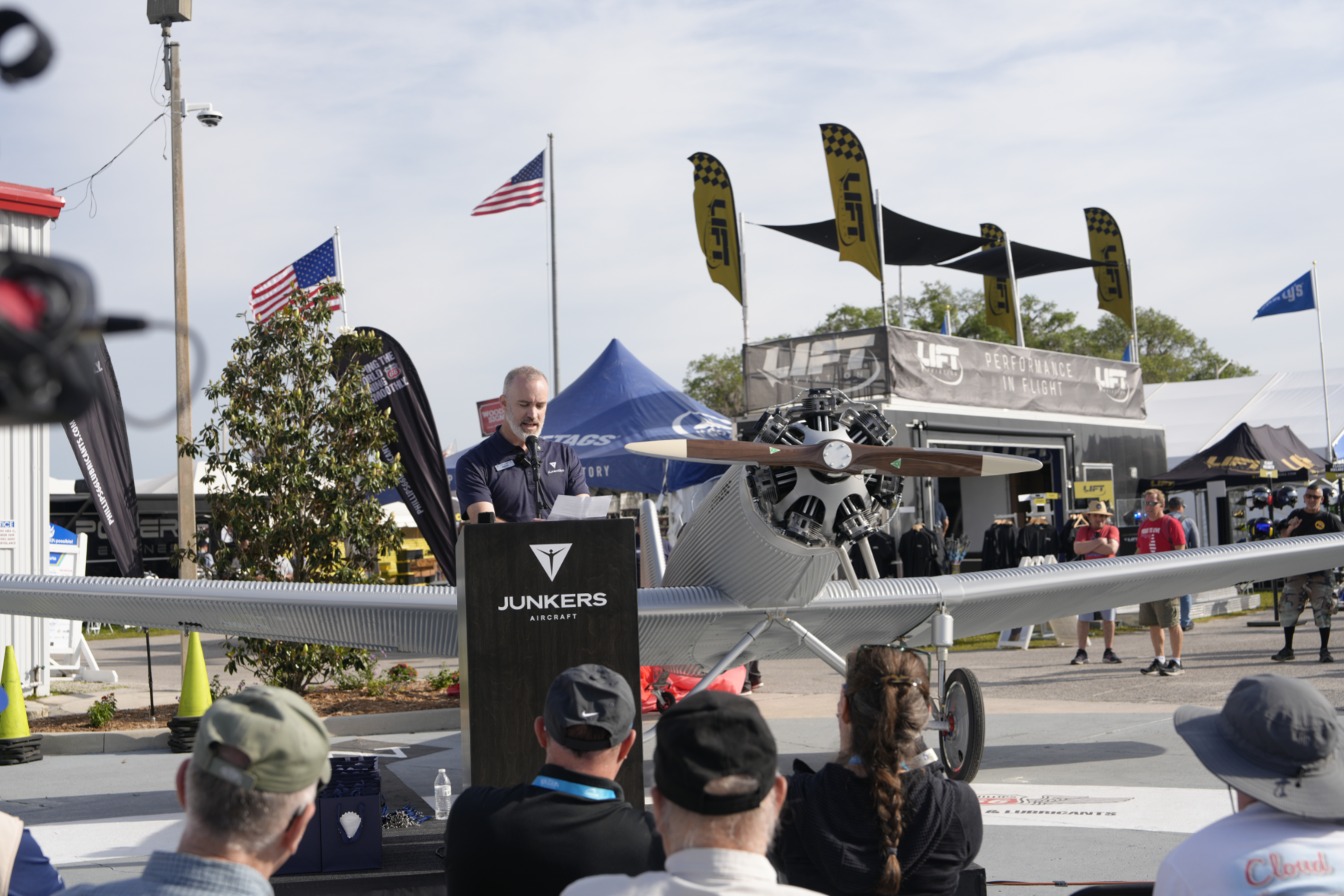
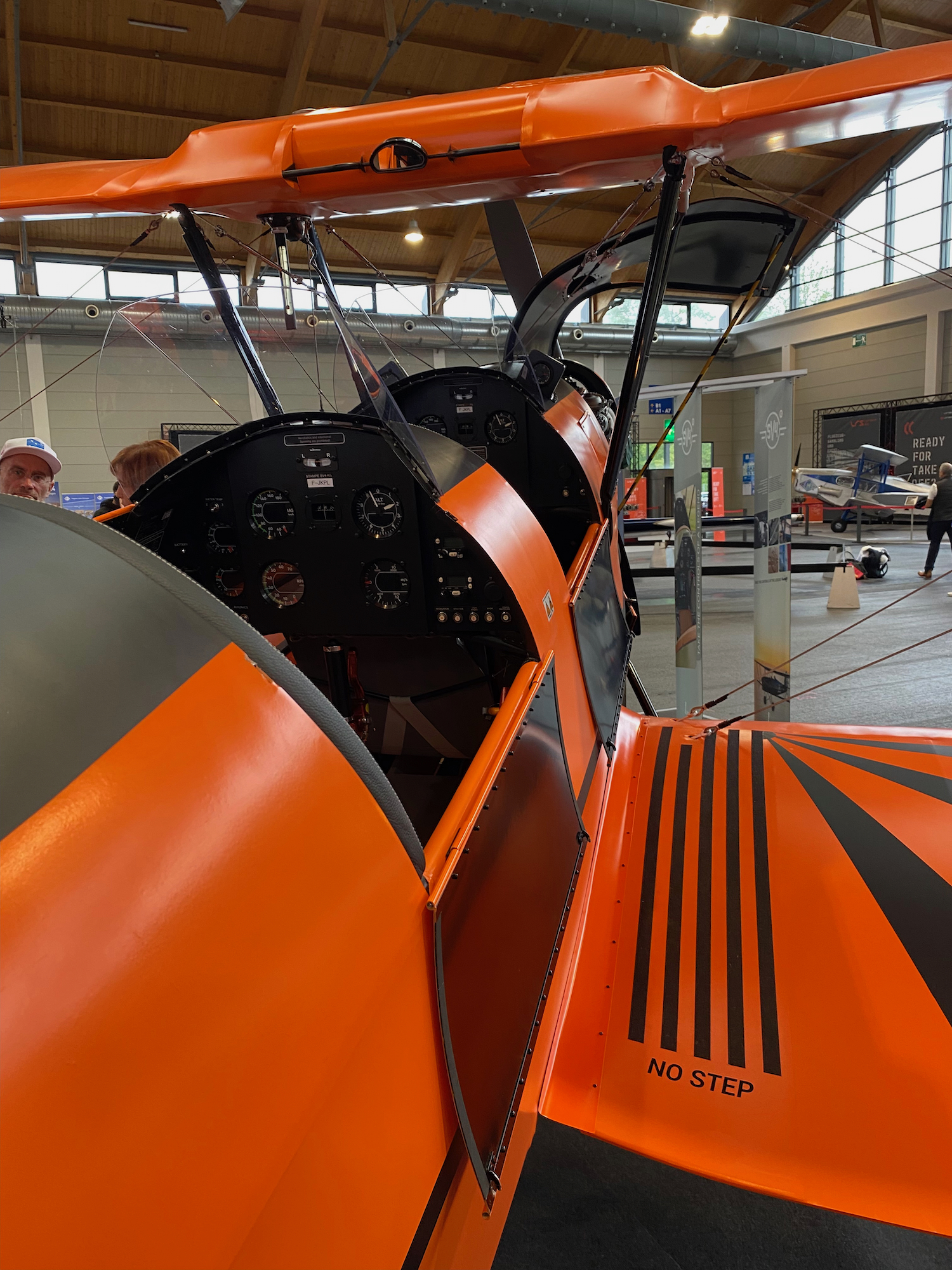



 “It’s designed like a 1300-pound aircraft that’s we’ve modified for two entirely different kinds of flying,” explains Top Rudder’s Chief Engineer George Boney. “It can handle up to 200 hp, but our standard Polini 303 allows for stall speeds under 20 mph and a cruise of 50 for ultralight flying. Or, you can add another fuel tank, a slightly larger engine and tires and have an inexpensive backcountry sport plane that has real STOL capabilities.”
“It’s designed like a 1300-pound aircraft that’s we’ve modified for two entirely different kinds of flying,” explains Top Rudder’s Chief Engineer George Boney. “It can handle up to 200 hp, but our standard Polini 303 allows for stall speeds under 20 mph and a cruise of 50 for ultralight flying. Or, you can add another fuel tank, a slightly larger engine and tires and have an inexpensive backcountry sport plane that has real STOL capabilities.”


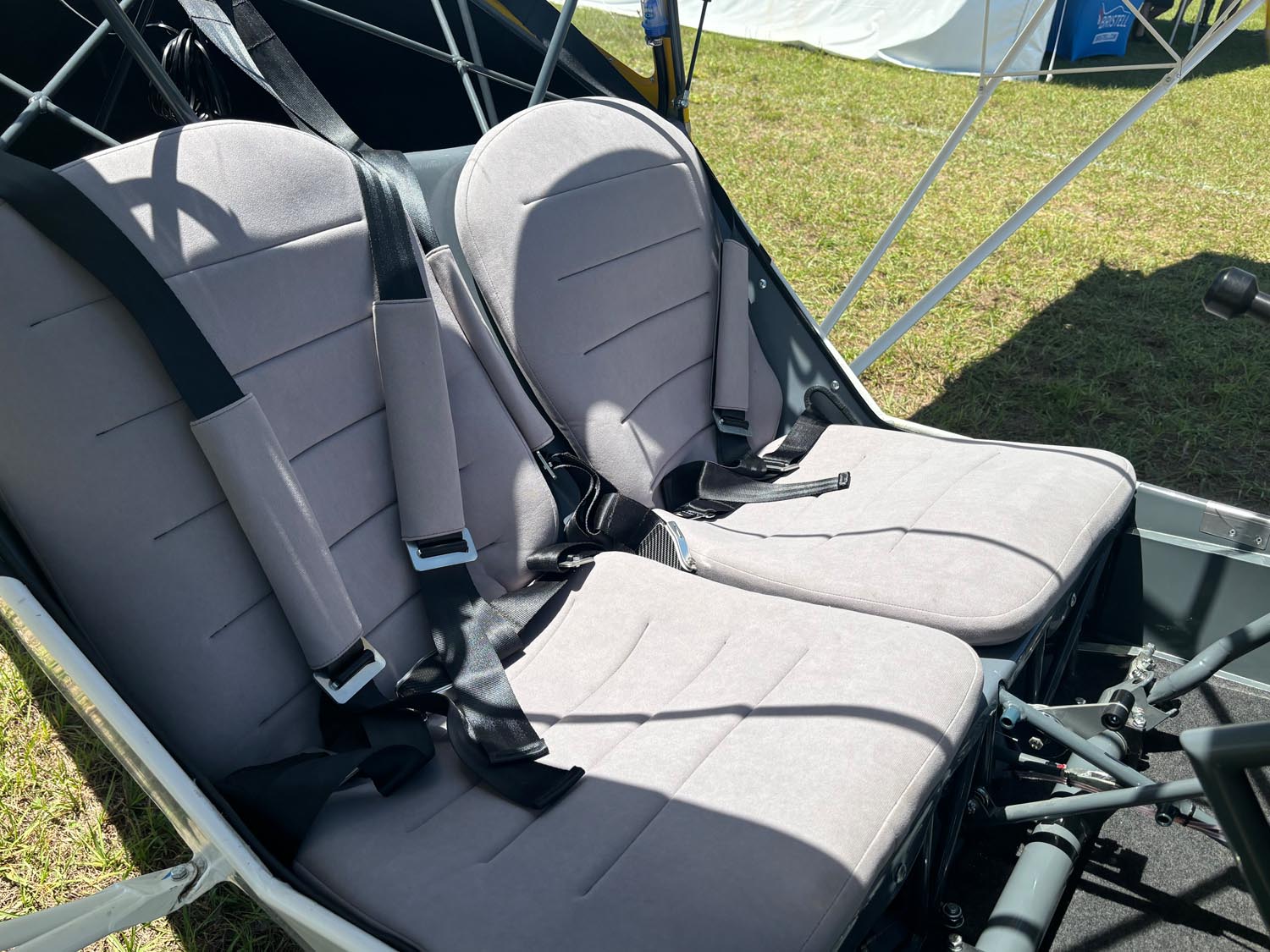
















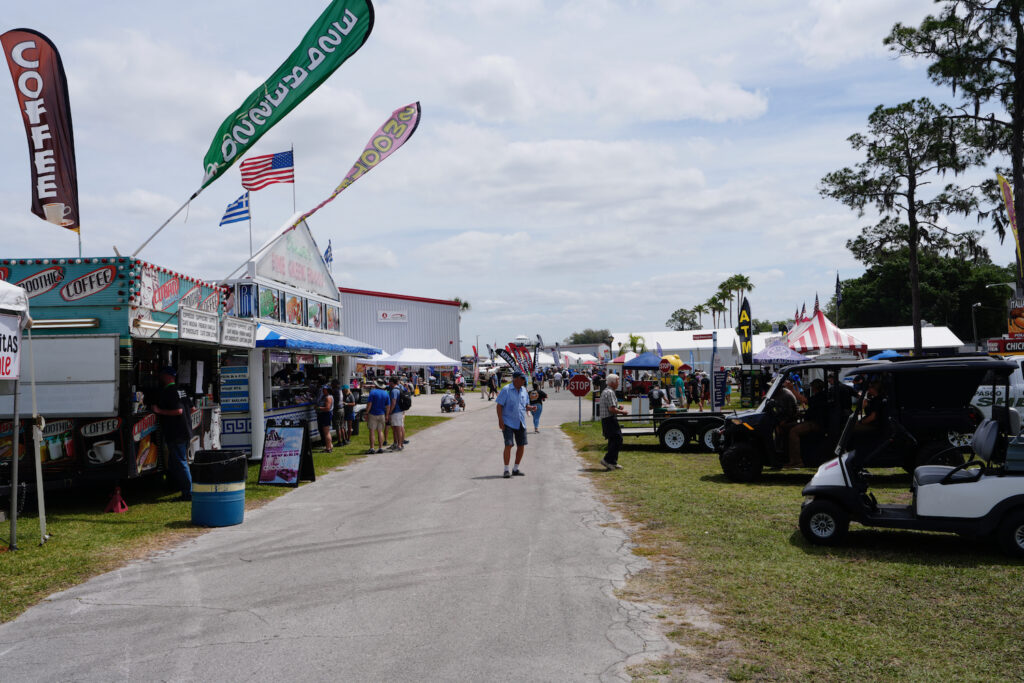













 It isn’t only that seaplanes can offer “triphibian” capabilities (a term once promoted by
It isn’t only that seaplanes can offer “triphibian” capabilities (a term once promoted by  Now from
Now from  “In 2007 we displayed the airplane with a rollout in the local concert hall, Tonhallen in Sundsvall,” he continued. “We flew for the first time in 2008.” He observed that they are still flying that same aircraft and the team believes they have this well sorted out and are ready for market.
“In 2007 we displayed the airplane with a rollout in the local concert hall, Tonhallen in Sundsvall,” he continued. “We flew for the first time in 2008.” He observed that they are still flying that same aircraft and the team believes they have this well sorted out and are ready for market.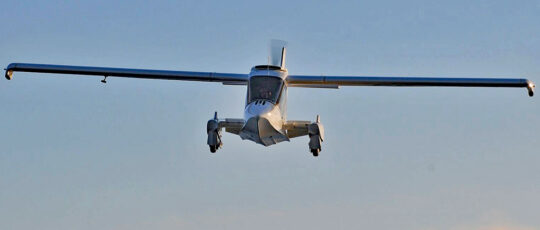 “We made a lot of modifications and have flown with three different engines,” related Staffan. “Early in the process we replaced the strutted wing with a cantilever wing to offer easy mounting and dismounting of the wings. We made a trailer for ease of moving the airplane to and from the airfield.”
“We made a lot of modifications and have flown with three different engines,” related Staffan. “Early in the process we replaced the strutted wing with a cantilever wing to offer easy mounting and dismounting of the wings. We made a trailer for ease of moving the airplane to and from the airfield.” “All modifications were made to the original aircraft… [but we have now] finalized the design of the production airplane in 3D-CAD environment,” Staffan clarified. We have made most of the molds (image) and will start producing kit airplanes in summer 2024. This start of production is a great milestone for us and, of course, is very exciting!”
“All modifications were made to the original aircraft… [but we have now] finalized the design of the production airplane in 3D-CAD environment,” Staffan clarified. We have made most of the molds (image) and will start producing kit airplanes in summer 2024. This start of production is a great milestone for us and, of course, is very exciting!” The airplane is equipped with conventional ailerons controlled with the stick via push-pull rods. The flap is of slotted type with a maximum extension of 45 degrees. A horizontal stabilizer and the elevator are controlled with the stick via push-pull rods. The rudder is controlled with pedals via cables and it extends to become a water rudder controlled with the pedals. Hinges on all control surfaces are of ball bearing type and the elevator is fully balanced.
The airplane is equipped with conventional ailerons controlled with the stick via push-pull rods. The flap is of slotted type with a maximum extension of 45 degrees. A horizontal stabilizer and the elevator are controlled with the stick via push-pull rods. The rudder is controlled with pedals via cables and it extends to become a water rudder controlled with the pedals. Hinges on all control surfaces are of ball bearing type and the elevator is fully balanced. The fuselage consists of a hull built from aramid fibre and the rest of the fuselage is carbon fiber. Fuselage panels are of sandwich construction and behind the aft seat a main bulkhead with a metal truss distribute the loads from the fuselage to the wings. The cockpit floor is constructed to permit the hull to flex somewhat when landing on water.
The fuselage consists of a hull built from aramid fibre and the rest of the fuselage is carbon fiber. Fuselage panels are of sandwich construction and behind the aft seat a main bulkhead with a metal truss distribute the loads from the fuselage to the wings. The cockpit floor is constructed to permit the hull to flex somewhat when landing on water. The fuel tank is placed in the fuselage and the filler neck is positioned under a lid on the left side. “This is an advantage compared to having wing tanks, especially when taxiing on water,” noted Staffan. “The engine will have good fuel supply without the pilot having to monitor which tank is chosen.”
The fuel tank is placed in the fuselage and the filler neck is positioned under a lid on the left side. “This is an advantage compared to having wing tanks, especially when taxiing on water,” noted Staffan. “The engine will have good fuel supply without the pilot having to monitor which tank is chosen.”










 Speaking of KITPLANES, that’s where I come from. In fact, Dan and I have history—the good kind—as he wrote about the then-nascent LSA category for KP back when all this got started. We felt it was important to get smart about the segment since it would intersect with Experimental aircraft. How, exactly, we weren’t sure but it did seem that many existing makers of kits would jump at the chance to series-build airplanes (and they did) and that we might just get some coming the other way (not as much). In any case, even though my recent activities haven’t been so directly involved with production SLSAs, I’ve kept a keen interest in them. So taking over for Dan here represents a comfortable and exciting expansion to my duties over at KITPLANES.
Speaking of KITPLANES, that’s where I come from. In fact, Dan and I have history—the good kind—as he wrote about the then-nascent LSA category for KP back when all this got started. We felt it was important to get smart about the segment since it would intersect with Experimental aircraft. How, exactly, we weren’t sure but it did seem that many existing makers of kits would jump at the chance to series-build airplanes (and they did) and that we might just get some coming the other way (not as much). In any case, even though my recent activities haven’t been so directly involved with production SLSAs, I’ve kept a keen interest in them. So taking over for Dan here represents a comfortable and exciting expansion to my duties over at KITPLANES.
 Eventually, career opportunities led me back to motorcycling, then back to airplanes again in 2004 when I was offered the big seat at KITPLANES. I got spooked by the economic issues at the end of the decade and swiveled to playing with two wheels before being lured back in 2018. I’ve been editor in chief of KITPLANES since then, and now add this website to my list of responsibilities.
Eventually, career opportunities led me back to motorcycling, then back to airplanes again in 2004 when I was offered the big seat at KITPLANES. I got spooked by the economic issues at the end of the decade and swiveled to playing with two wheels before being lured back in 2018. I’ve been editor in chief of KITPLANES since then, and now add this website to my list of responsibilities. 
